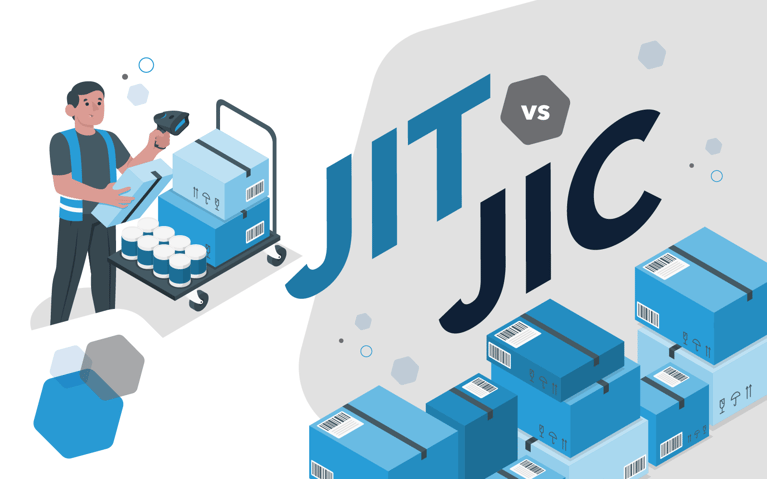Strong inventory management practices are a foundational part of a well-run ecommerce business. The management process includes ordering, storing, using and replenishing your inventory. The primary objective is to have the right products in the right place at the right time – resulting in satisfied customers. Companies can optimize cash flow, reduce storage costs and maintain adequate stock levels through optimal inventory management.As easy as it sounds, inventory management is complex. Even with inventory visibility tools and forecasts, you can find yourself with too little or too much. While you don’t want to find yourself in either situation, excess inventory can significantly impact your business.
What is excess inventory?
Excess inventory is surplus – stock sitting on shelves and approaching the end of its lifecycle. For example, a fast fashion retailer has a winter sweater that reflects trending color and style demands for that season, but as it moves into spring, hundreds of units need to be moved as next year’s trends will be different.
Another way to look at excess inventory is any product that is in excess of immediate needs. For example, you are only forecasted to sell 200 units of a particular product in the next month, but you have 600 on hand.
What causes excess inventory?
Every retailer will likely run into excess inventory at some point. However, if it’s a common issue, there is likely an ongoing problem. Excess inventory is caused by:
Poor order management
Order management is a crucial component of inventory management. Ecommerce businesses must keep track of sales and orders and track the process from end to end. By having accurate information about demand and sales performance, you can make more informed purchasing decisions and reduce the need to overstock. Essentially, you can better identify or predict how much stock you need and when.
Unequal product line focus
It’s not uncommon for retailers to have multiple product lines. When brands add new lines added or extensions, it’s easy for them to focus on new market penetration. In some cases, this takes away from existing customers and can create imbalances in inventory if you end up with excess stock from decreasing sales or overstocking.
SKU proliferation
Along with unequal product line focus, SKU proliferation can result in surplus stock. When merchants continuously add new product lines or variations such as size and color to their catalog, the number of SKUs (Stock Keeping Units) increases. However, this does not necessarily mean more sales. SKU proliferation can be positive for a retailer if it creates new demand and gains a competitive edge. However, if it is not controlled or backed by robust data analysis, it can lead to excess inventory.
For example, stocking multiple product colors might increase sales, but it also divides demand between these different options. Without adjusting inventory levels based on demand, the retailer could end up with more stock than needed.
Changing consumer demand and competition
Trends change on a dime, the economy changes, preferences evolve and other unexpected occurrences can shift the demand for your product, resulting in excess inventory. Additionally, competition can change, whether a new brand enters the scene or a competitor gains notice, which can also cause a drop in sales.
A critical subset of changing consumer demand is trends. Apparel, cosmetics and accessories are often rapidly-changing desires, particularly in fast fashion. When dealing with narrow sales windows, it’s easy to get caught with excess stock.
Just in Case (JIC) inventory
Retailers who keep “extra” inventory just in case can find themselves saddled with excess. The pandemic mentality created a fear of supply chain disruption, so rather than missing sales opportunities, they chose to have extra items JIC. This can cause an accumulation that costs businesses in other ways.
No matter what circumstance causes your excess inventory, the key becomes how it affects you and how to manage it.
How does excess inventory affect ecommerce businesses?
Excess inventory can cut into your bottom line and cause other challenges. Common problems are:
- Increased storage costs: Extra products take up space, which costs rent, maintenance, utilities and insurance.
- Reduced cash flow: A product that sits equals reduced cash flow. Instead of moving stock and continuing to grow your business, you are missing out on profits and incurring extra storage fees.
- Obsolescence: If an item sits too long, it becomes outdated or unusable, running the risk of being a total loss.
- Inaccurate demand forecasting: Excess inventory may indicate that you lack market expertise or have poor inventory management. This can result in a perpetuating excess stock problem unless addressed.
Identifying excess inventory
Several metrics signify excess inventory. You can identify problems by looking at inventory KPIs like:
- Average inventory (Beginning inventory + Ending inventory/2): The level of inventory you have during a specified period. A steady supply means excess inventory is unlikely to occur.
- Days on hand (Inventory/Cost of sales x 365): How long inventory is stored before converting to sales. A higher number of days shows a slow-moving item, which can lead to excess inventory if not managed properly.
- Inventory to sales ratio (Inventory value/Sales value): Amount of inventory compared to number of sales. A high ratio means inventory levels are rising faster than sales.
- Inventory turnover (Sales/Inventory): How many times inventory is sold out and replaced during a specified period. When turnover is slow, your units are outpacing demand.
How to manage excess inventory
Selling excess inventory can result in losses or lower profit margins. However, there are certain scenarios where you can turn the situation in your favor. To manage your excess inventory, try:
Create promotions and sales
People are drawn to sales. With 8 out of 10 shoppers influenced by promotions, It’s part of the retail environment. A sale or discount may be the tipping point for people who have liked, saved or added an item to their cart. Discounting items – especially if they’re nearing the end of their lifecycle – is a great way to move stock.
Bundle products
Bundling has become a well-received retail trend – and a way for sellers to pair a slow-moving item with a popular one. Think about using excess inventory in subscription boxes, seasonal boxes, bundles or in other creative ways.
Use as a giveaway item
Customer satisfaction leads to loyalty, which leads to higher LTVs. Giving a gift from time to time is an excellent way to say, “Thanks for being our customer.” It’s also a way to product sample. You can create a positive impression while purging excess stock in a way that can pay off later.
Give back to the community
When brands give back, it earns customer loyalty. If you have excess stock that still isn’t moving after an effort, consider donating to charity or your community. Look at where your product can do the most good and help it get there. Think of it like the grocery stores that give to local food banks or apparel companies that give to shelters—it’s an act that can make both consumers and brands feel good.
How a 3PL can help you manage excess inventory
Managing excess inventory comes down to excellent inventory management. A 3PL partner can provide the technology (OMS/WMS) and expertise you need to avoid surplus stock.
To find out if Cart.com is the right 3PL for you, contact our team today.
Subscribe to our emails for the latest industry insights!
By entering your email, you agree to receive marketing emails from Cart.com






